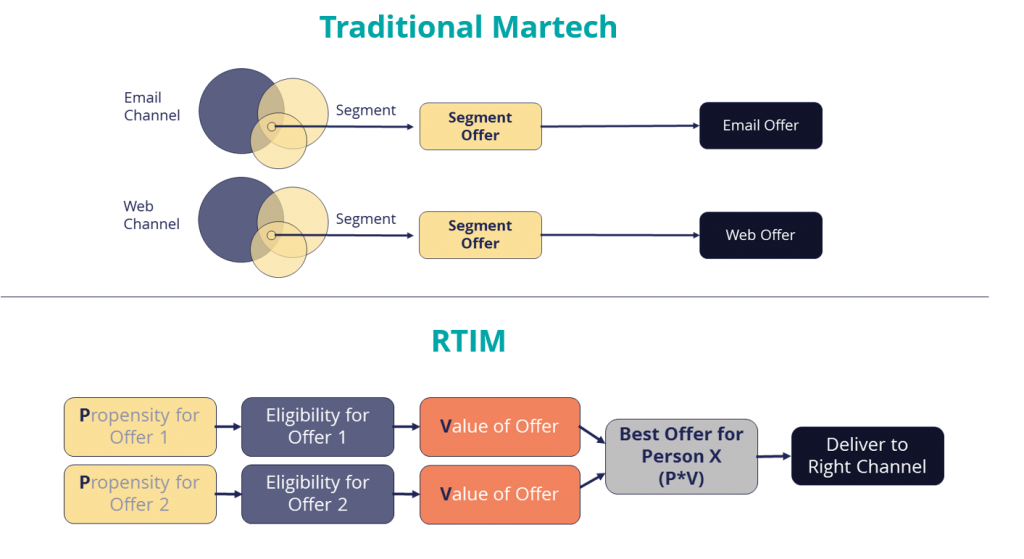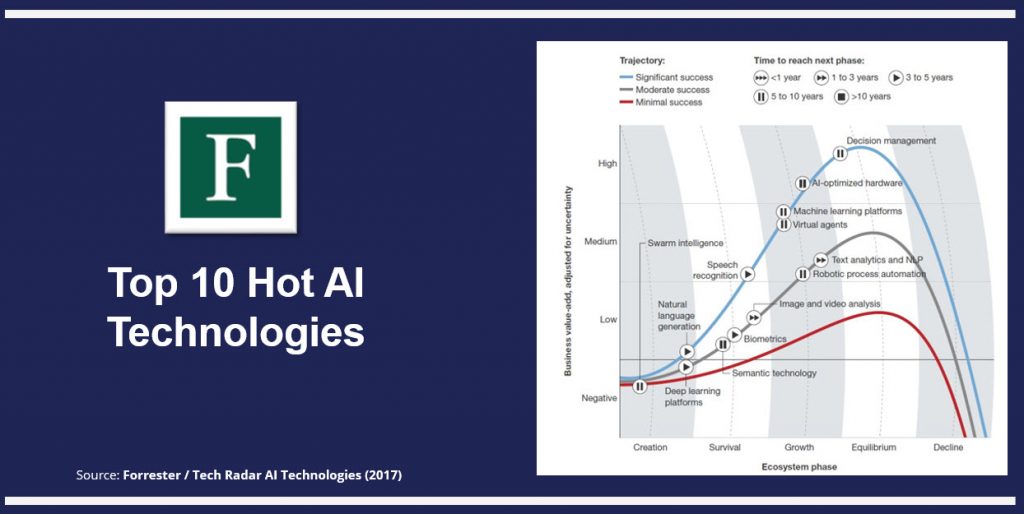Real-Time Interaction Management (RTIM) delivers personalized experiences to people.
Earlier this year, I signed up for a points program with a large hotel chain, and somehow my last and first name were reversed in the enrollment process. The next day I noticed the welcome email message started with, “Jeffs, we’re so happy you joined the fam.” Figuring it was my botch I went online and fixed it in my profile – problem solved – or so I thought.

Source: https://i1.wp.com/vincejeffs.com/wp-content/uploads/2017/11/AwesomeNotAverage.jpg
Apparently the erroneous data instantly had spread, like a venomous bite, and propagated to other databases. My feeble attempt to suck it from the source was too late and didn’t work. Still, nearly a year later, I still get messages starting with, “Hello, Jeffs” which rather than setting an intimate tone for the oncoming interaction, sets a grating one. I may still read on, yet I’ve been reminded upfront I’m essentially a bunch of bytes to the interactor on the other end.
I get it – mistakes happen; systems are stitched together, and people (and the systems they use) are under enormous pressures to share data, scale, and automate. Nonetheless, when firms chose to operate this way – neglecting to fix little things, they’re failing to measure the impact of the most fundamental flaws that often make or break an entire customer relationship.
Traditional Marketing Technology (Martech) vendors espouse solutions allegedly providing personalized communications. And when their clients deploy these systems, they assume they’ll develop meaningful relationships with individual customers but, the fact is, most won’t. Customers still routinely report broken processes (like my example), one-size fits all treatments, non-individualized experiences, and very few (only 27 percent) think AI will help (1). So, if you’ve been entrusted with helping achieve loyalty-building relationships, that’s more than a little discouraging, since it’s not for lack of will, good intentions, invested time, or resources.
As consumers, we browse, research, shop, and purchase constantly – sharing our information freely (sometimes unbeknownst to us). We surrender our identity, intentions, preferences, history, location, and so on – often repeatedly, yet we see little in return in terms of well-tailored products, services, and experiences. And this goes beyond the obvious, such as in self-service experiences (where our expectations for personalization are low), into human-assisted channels where our expectations are higher, but paradoxically we often encounter robotic-like agents.
Consider how brands place customers into huge buckets that dictate treatments:
Most loyalty programs have about four tiers. If a program has 10 million members, that’s about 2.5 million members per tier.
When a data scientist builds a decile-based RFM model (RFM stands for an algorithm that scores based on recent transactions, frequency of them, and their monetary values), that’s 10 segments, and again about 1 million customers per segment.
And even when zip code level data is used, that’s still about 8,000 people to a segment – and let’s face it, as much as you love your neighbors, you know how different you are from them.
Rarely do we enjoy being stereotyped. When we’re assigned to a troupe, and approve of it, it’s usually because we made a conscious choice. We find more differences than similarities when we are forced into artificial groupings, and we get rightfully grumpy with being pigeonholed. Conversely, we rave when companies celebrate our uniqueness, and we love to tell these stories.
RTIM – Your AI ROI Machine
AI, arguably the most overused and abused word of the year, particularly among Martech vendors (and perhaps even some CustomerThink writers), does have in its midst the underlying technology to begin to solve for improving and individualizing customer experiences, and in techno-geek terms it’s known as RTIM (Real-Time Interaction Management). Businesspeople using RTIM, however, would rather focus on results versus names, and the reality that these systems consistently generate 300 percent plus ROI (2) – in other words, they are AI ROI Machines.
Why do RTIM systems outperform traditional marketing automation systems? Simply put, it’s because they make decisions one individual at a time, hence delivering one-to-one interactions. Figure 1 depicts the difference between many of today’s Martech systems and an RTIM system:

Figure 1 – Typical Martech system versus RTIM system – Source: https://i2.wp.com/vincejeffs.com/wp-content/uploads/2017/11/Figure1.png
Figure 1’s top lane depicts how traditional Martech systems place customers into segments, assign offers to those segments, and execute treatments in each channel. On the other hand, RTIM systems act on behalf of each customer (instead of tranches of them globed into segments). Moreover, RTIM systems operate based on one set of coordinated rules and analytics linked into a set of arbitration strategies – for thousands of customers per second.
For example, a company with five products marketed by five different divisions uses a single decision engine to resolve the best thing to do for the customer. Consequently, an RTIM approach enables a brand to act as one organization instead of many disparate companies with dozens of conflicting rule engines.
RTIM-based systems recall an individual’s history – instantaneously – each time a customer interacts, factor in new (contextual) information, and calculate the best action. They execute real-time analytics to determine an individual’s propensity to respond to a candidate list of eligible offers, then consider customer value and the economic benefits of the offers before rendering a final decision. Granted, they don’t have perfect knowledge of the person, yet just like a human brain, they remember past interactions and learn from them, and place a premium on the most up-to-date information. They’re also agile enough to perform dynamic recalculations (in less than one second) to further improve the pending decision and enhance the relationship. Through this two-way iterative approach, they essentially carry on a real-time conversation in a single session as shown in Figure 2.

Figure 2: RTIM’s iterative two-way conversational approach – Source: https://i2.wp.com/vincejeffs.com/wp-content/uploads/2017/11/Figure2.png
Regardless of the superficial popularity and obfuscation of the term AI, it’s incumbent on us as marketing professionals to inspect the value-added by the underlying CX technology. Earlier this year, Forbes did just that, citing the Forrester Tech Radar on AI technologies (3), which found decision management as the top hot AI technology (Figure 3). And decision management is the central capability embedded in RTIM systems.
With RTIM and its decision management, brands can personalize in real-time, improving on legacy and static Martech systems and processes, and reinvent how customers are treated. Decision management enables companies to make analytically arbitrated evaluations during every customer contact, treating each person based on their constantly changing context, fluid needs, and demands for relevance and continuity.
In his article, What is RTIM, Barry Levine calls it “Right Now Contextual Marketing” and goes on to cite work by Forrester analysts Rob Bronson and Rusty Warner – who both helped establish RTIM market awareness that culminated in the RTIM Wave (4). Levine describes how RTIM enables marketers to perform “a continual negotiation — a kind of dance — happening in real-time between all available data and all available offers/actions.”

Figure 3: Forrester AI Tech Radar – Source: https://i0.wp.com/vincejeffs.com/wp-content/uploads/2017/11/Figure3-AITechRadar.jpg
Sounds obvious, and aren’t brands already doing this? Well, not really. Consider that on many channels:
• You see the exact same style screen and get messages identical to those of every other visitor.
• You can’t set and store preferences or alerts for receiving communications.
• Call center, branch, and store agents seem ill-equipped to set, store, and recall even the most basic details about you, like how many children or pets you have, and what their names are.
• When you receive an email, it’s maybe one of a handful of different versions, so again, if the brand sending it has a list with millions of email addresses, you’re receiving the same content as thousands of others.
• Advertisements stalk us for products we just bought or already own.
• When you place a call into a service center for the 10th time in 2 weeks (and you’re feeling obligated to invite them to dinner because how much time you’re spending with them), it’s clear the vibe from the agent isn’t exactly a personal one.
• When you start a process on one channel and bail out, and then later reconnect, you’re forced to repeat steps.
As marketing practitioners, we can do better. And as with any road to improvement, it must start with an admission that issues exist and they are negatively impacting others.
Impactful Customer Engagement
Great customer engagement starts with customer understanding. And tiny details matter – things that on the surface seem trivial, although later may turn into a customer testimonial like this:
“Yes, that pet store remembered me, thanked me for my business, remembered my dog’s name breed, and age (Sandy, our Westie, is 14 now). They seemed genuinely concerned for her health and status. They provided me valuable insights into her dietary considerations, and their app sends me reminders for refills that I might otherwise miss.”
Unpack that and contemplate what it’s implying – a memorable personal experience with an aura of care, empathy, and value. Remembering names, age, past purchase history, applicable products – admittedly is basic stuff. But take that basic data, and in combination with other factors, use it to systematically treat each customer’s situation uniquely, and you’ll put information and technology to beneficial use.
So, forget whether this approach is using AI or not, and start worrying about whether what it’s doing makes common sense for your customers at the moment of interaction. What matters is not whether you store these details, but whether the underlying technology mines that data, learns customer preferences – and with each transaction gets smarter about optimal timing and consumption patterns, and realizes when to trigger meaningful messages.
Frontline staff are already busy, and they’re increasingly asked to be super-human and to provide white-glove treatment at scale. To do it, they’ll need support from technology that stores and surfaces critical insights at the right time, so they can buck the tendency to treat customers as averages – because, what you don’t want are segment-oriented attitudes like this:
• Hey since winters coming, everyone needs a coat so we’re pushing winter parkas.
• She’s one of my older fixed income retiree types – they all love that annuity product.
• Millennials love iPhones, and tweens always buy that pink Otter case.
You want individual-oriented sentiments:
• That was Jim and he’s 62, and you’d never believe that Jim loves ziplining, has a Shih Tzu, and listens to Dubstep late at night while he reads his email.
• Rosemary says she’ll never retire. She loves her job, loves to day trade, reads email at lunch, and will likely work for her entire life.
• Yes, Sara is a unique. She’s 21 and never responds to text messages, unless from close friends; she gets up early, reads email before work, and is into Hello Kitty, guinea pigs, and Thrash Metal.
Each one of your customers are unique people, not customer id’s in cluster codes. Treat them as such.
Continuous CX Improvement
Back to our little story of the inverted last name. You’re probably wondering, couldn’t that company have solved this problem without an RTIM system? Maybe. But outfits that work from a common customer database, understand the true meaning of “system of record” and synchronize data when its distributed, and use RTIM to operate from an organized set of rules and analytics and make the best possible decisions in the moment are much more likely to consistently get CX right, and to improve it – one person at a time.
Endnotes:
(1) What Consumers Really Think About AI: A Global Study, https://www.pega.com/ai-survey, 2017
(2) Forrester Total Economic Impact (TEI), https://www1.pega.com/insights/resources/forrester-total-economic-impact-tei-pega-marketing, 2016
(3) Forbes, https://www.forbes.com/sites/gilpress/2017/01/23/top-10-hot-artificial-intelligence-ai-technologies/ , 2017
(4) The Forrester Wave: Real-Time Interaction Management, https://www.forrester.com/report/The+Forrester+Wave+RealTime+Interaction+Management+Q2+2017/-/E-RES136189, Q2 2017,



